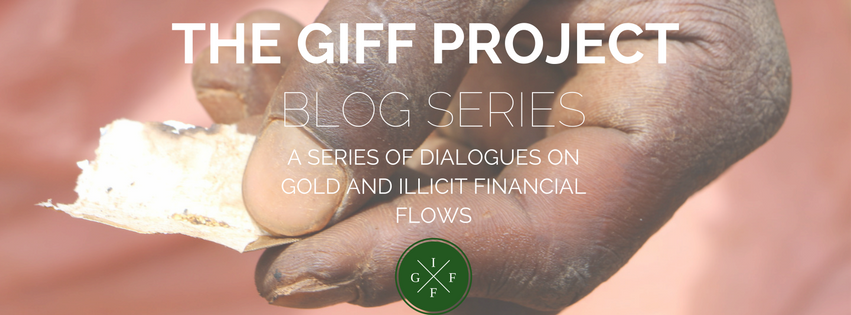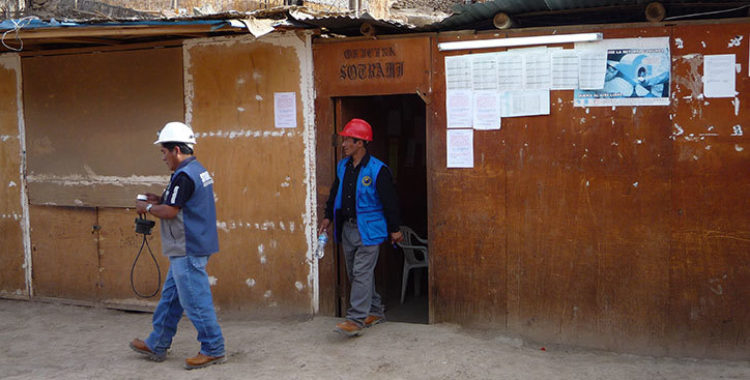
Interestingly, in Peru, there are organised crime actors who do not cooperate with criminal gold mining groups, even though they use the same drug trafficking routes, especially between Peru and Bolivia. We only really heard about one organised crime group in Peru; the Sanchez-Paredes clan in the Northern province of La Libertad, which owns formal mines to launder revenues from its drug trafficking activities.
During my research, I interviewed activists campaigning to preserve the Amazon rainforest. I had spoken with Don Alfredo who, after receiving some land and forest concessions in the Amazon region, has since been murdered, in November 2015. Criminal groups were likely behind his death. This case is just one of several.
Bolivia has recently become a hub for laundered gold arriving from Peru. Sometimes gold is transported by people just walking across the border, other times they use drug traffickers’ planes.

Human trafficking
One result of the criminalisation of the gold sector is human trafficking. When in the field, I visited a bar, but in practice a brothel. At the entrance were the house rules. The girls had to always say what times they came in and out, and where they were going: in principle, there was freedom of movement.
In reality, they could not just quit and leave. There are approximately 2,000 sex workers in one informal mining town alone, Delta Uno. I’ve talked to girls aged 15—who had arrived at the age of 12—being sexually exploited in mining areas. They had been trafficked from several other provinces in Peru, and even other countries, under fraudulent recruitment practices.
I often talk about the chain of victimisation. The miners themselves are being exploited, but are simultaneously the perpetrators when they sexually exploit young girls and women. The young girls are at the lowest point of this long chain of victimisation. Too often when we speak about the miners, we do not mention women and other vulnerable groups in the area.
Labour exploitation is a profound challenge: in Venezuela we came across data on the indigenous Yanamami community being exploited in the mining area, as just one example.
Displacement is another effect of mining. In Colombia, for instance, 87% of displaced people come from areas of informal and illegal mining activities.
Deforestation and illegal mining
Unregulated ASM can also lead to deforestation. In this context, this is the rapid and alarming destruction of the protected rainforest areas of the Amazon region. Amongst the dense flora and fauna are pockets of deserts, where the illegal mining camps exist. Unchecked mercury use has damaged the surrounding ecosystems, as well as the health of the miners and their families.
Between 2005 and 2012, in Peru, there was twice as much deforestation than over the previous twenty years. In the region of Madre de Dios, where there is a high prevalence of informal and illegal mining, 50,000 hectares of forest have been destroyed.
In the seven countries covered in our report, only two countries, Peru and Colombia, made the distinction between informal and illegal gold mining. Informal miners are those who have started the formalisation process; they don’t have the license yet, but are starting with their activities. Illegal miners are those that, for instance, are mining in protected rainforest areas. And, of course, when criminal groups, like in the case of Colombia, run the mine.
Colombian experts we spoke to said that it would take approximately ten billion dollars and twenty-five to forty years to reverse the damage that has been caused by deforestation.
Different legal frameworks - how to tackle them
We studied the different legal frameworks in these countries. There have been so many tools and guidelines developed; how do we tackle that? Answer: from different angles.
You can tackle it from the organised crime angle, looking at human trafficking, conflict minerals, environment and corruption. However, very often these countries have not signed the relevant treaties and conventions. Even if they have, there are often no review mechanisms in place, and limited capacity to enforce the requirements.
This presents the challenge of signatures without implementation; initiatives are agreed to but then never acted upon. Furthermore, there is often a focus on the criminalisation, but not on the protection of the victims.
There are challenges associated with corruption. Often these legal instruments focus on the governments, which is of course one stakeholder group, but less so on the corporations.
Every stakeholder group has their share of the responsibility in managing this issue. It’s just a matter of bringing them together and, on the ground, acting together.
Livia Wagner works as the Private Sector Advisor at the Global Initiative Against Transnational Organized Crime. Livia’s work mainly covers the issue of human trafficking, business partnerships, and organised crime with a special focus on Latin America. She coordinates the Responsible & Ethical Business Coalition against Trafficking (RESPECT) Initiative, which serves as a platform for thought leaders, practitioners, and policy makers and to mobilize the business community as a strategic partner to tackle human trafficking. Her latest major research activity focused on organized crime and illegal gold mining in Latin America and developing responses as alternative livelihoods. Ms. Wagner has written several publications and is a member of the Austrian Association for Sociology.
The GIFF Project is a joint initiative with the Global Initiative against Transnational Organised Crime. It enables practitioners to investigate and map financial flows linked to the ASM gold sector and strengthen programme design and policy formulation.






